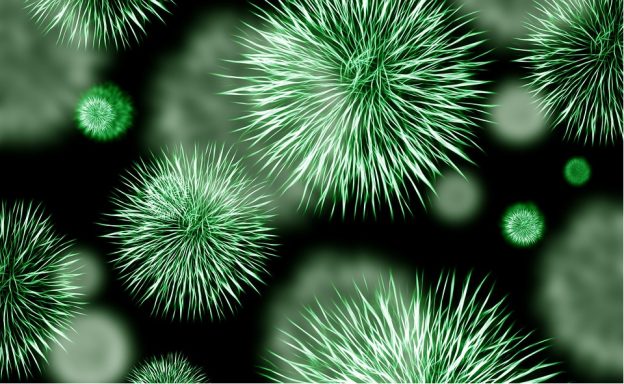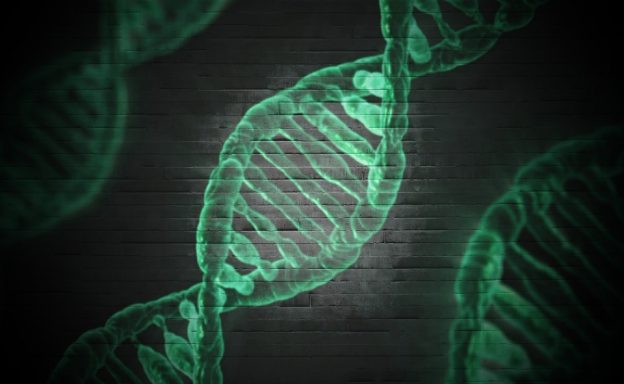Author Archives: admin
Defector intolerance promotes cooperation
One of the outstanding questions for biologists and social scientists has been the evolution of cooperation. Cooperation is observed both among humans as well as among animals. The question is “How cooperation can evolve”? This was an intriguing question since Darwin’s Origin of species was published. The problem is that the basic tenet of evolution by natural selection is “the survival of the fittest”. This prevents individuals from cooperating since this decreases individual fitness due to the cost cooperation requires. For example, wearing a face mask during a pandemic is an act of cooperation. It causes some discomfort to individuals but benefits the whole society. Mathematical models have played a crucial role in our understanding of mechanisms leading to evolution of cooperation. Cooperation between two individuals is described by the Prisoner’s dilemma. Cooperation in larger groups is described by the Public goods game. To explain evolution of cooperation among members of groups emphasizes group cohesion and cultural norms to explain the “prosocial” outcomes of public goods games. However, the Public goods game shows that defection (i.e., selfish behavior) is still an evolutionary outcome in that all individuals will eventually defect. A new mechanism that promotes cooperation both in the Prisoner’s dilemma and the Public goods game was shown by Krivan and Cressman (2020). This mechanism is based on the assumption that individuals are free to leave their group and form a new group. Experimental work on such opting out behavior shows that, not surprisingly, individuals are more APT to leave groups as the number of defectors in the group increases. Indeed, Krivan and Cressman (2020) show that such behavior promotes evolution of cooperation, provided the time individuals can stay in a group increases. One may assume that cooperation will be promoted if individuals opt out against defectors in the hope of forming a new group with all (or more) cooperators. Surprisingly, Cressman and Krivan (2020) show clearly that when individuals are free to leave their current group, the best opting out rule at promoting cooperation is one whereby the only groups that voluntarily stay together between rounds are those that are homogeneous (i.e., those groups that are either all cooperators or all defectors), when these groups stay together for enough rounds of the game (i.e., long enough). This outcome emerges when defectors are completely intolerant of individuals who cooperate (e.g., defectors exhibit xenophobic behavior toward cooperators) and so opt out whenever their group has a cooperator in it. The strong preference by defectors to be with like-minded individuals then causes all heterogeneous groups to disband after one round.
Křivan, V., Cressman, R. (2020) Defectors’ intolerance of others promotes cooperation in the repeated public goods game with opting out. Scientific reports, to be pblished on November 11, 2020.
Conflict, Competition, Cooperation and Complexity: Using Evolutionary Game Theory to model realistic populations

Cancer modelling
Integrated Mathematical Oncology a part of Moffitt Cancer Center at Tampa focuses on various aspects of cancer modeling including adaptive cancer therapies that are currently clinically tested. These approaches that are based on a novel approach that considers cancer as an evolutionary disease, show usefulness of game theoretical models in clinical trials. IMO runs its own PhD program.
Adaptive growth of bacteria on two substrates
In Krivan (2006) bacterial growth on a mixture of two sugars is modeled. It is well know that in mixed substrates with glucose and lactose bacteria often utilize glucose first and then switch to lactose (or to some alternate source of energy). At the molecular level this switch is known as the lac operon. In this article I ask: Is this switch evolutionarily optimized? In other words, do bacteria switch between the resources at the time that maximizes their fitness? To answer this question I build a model of bacterial growth on two substrates. The model assumes adaptive bacterial switching that maximizes bacterial per capita population growth rate – a proxy for bacterial fitness. Using some data from the literature, this model allows me to predict the time at which bacteria should switch. Then I compare this predicted time with observed times of switching for different substrates and different initial sugar concentrations. The observed times of switching show a very good agreement with predicted times. This strongly supports the idea that the molecular mechanism regulating resource switching is evolutionarily optimized. This is also a test of an optimal foraging theory when populations undergo population dynamics. On contrary to the majority of experiments on the optimal foraging theory that do not consider population dynamics of foragers, this model considers all populations dynamics.
The Lotka-Volterra predator-prey game
The Lotka-Volterra predator-prey model is one of the earliest and, perhaps, the best known example used to explain why predators can indefinitely coexist with their prey. The population cycles resulting from this model are well known. In this article I show how adaptive behavior of prey and predators can destroy these cycles and stabilize population dynamics at an equilibrium. The classical predator-prey model assumes that interaction strength between prey and predators is fixed, which means that coefficients describing interactions between prey and predators do not change in time. However, there is increasing evidence that individuals adjust their activity levels in response to predation risk and availability of resources. For example, a high predation risk due to large predator numbers leads to prey behaviors that make them less vulnerable. They can either move to a refuge or become vigilant. However, such avoidance behaviors usually also decrease animal opportunities to forage which leads to foraging-predation risk trade-off. The present article shows that such a trade-off can have a strong bearing on population dynamics. In fact, while the classical Lotka-Volterra model has isoclines that are straight lines, the foraging-predation risk trade-off leads to prey (predator) isoclines with vertical (horizontal) segments. Rosenzweig and MacArthur in their seminal work on graphical stability analysis of predator-prey models showed that such isoclines have stabilizing effect on population dynamics because they limit maximum possible fluctuations in prey and predator populations. The present article shows that not only population fluctuations are limited, but they can even be completely eliminated.
Habitat selection game
The habitat selection game is a game theoretical concept that describes species distribution in22 heterogeneous environments. For a single population, Fretwell and Lucas (1970) defined the Ideal Free Distribution (IFD) in patchy environments, under which animal payoffs in all occupied patches are the same and maximal. Thus, the IFD is a Nash equilibrium of a game that we call the Habitat Selection Game. As any strategy that uses only already occupied patches will get the same fitness at the Nash Equilibrium, it is not clear if the Ideal Free Distribution is stable with respect to mutant invasions. Cressman and Krivan (2006) proved that the IFD is also an Evolutionarily Stable Strategy, i.e., resistant to mutant strategies. The habitat selection game was extended to two and multiple species. The IFD for two competing species in a two-patch environment was derived by Krivan and Sirot (2002). Cressman et al (2004) proved that this two-species IFD is also an Evolutionarily Stable Strategy for two populations. The effects of the IFD on population dynamics of two competing species was studied by Abrams et al. (2007). Evolutionarily stability under population dynamics were considered for multiple populations by Krivan and Cressman (2009) and for a single population by Cressman and Krivan (2010). Many results on habitat selection game for competing species or predator-prey interactions were reviewed in Krivan et al. (2008).
Optimal foraging game
Optimal foraging theory (MacArthur and Pianka, 1966; Charnov, 1976; Stephens and Krebs, 1986) assumes that organisms forage in such a way as to maximize their fitness measured as energy intake rate. These models assume a homogeneous environment with several resource types that a consumer encounters sequentially, and predict the optimal consumer diet. This line of research led to the prey model (also called the ”diet choice”; Charnov, 1976). The basic assumption here is that individuals do not compete for food. The classical example of such a situation is the experiment with great tits where a single animal feeds on two food types delivered on a conveyor belt (Krebs et al., 1977; Berec et al., 2003) which assures that prey are not depleted by predation. Certainly, this is a very unrealistic assumption, and I am interested to understand how predictions of the optimal foraging theory are shaped when population dynamics of resources and/or consumers are considered (Krivan, 1996; Krivan and Sikder, 1999; Krivan and Eisner, 2003). The game theoretical approach to optimal foraging is presented in Cressman et al. (2014).

Consistency of host reproduction and infection transmission in sexually transmitted diseases
Classic models of infection dynamics describe host reproduction independently of infection transmission. This is fine for air-borne or vector-borne infections, and also for sexually transmitted diseases in humans, where only a negligible proportion of sexual intercourses results in reproduction. However, it can be an important omission in case of sexually transmitted diseases in many animals in which mating and reproduction are strongly correlated. Mating then mediates both host reproduction and infection transmission. Mathematical models of such infections should contain consistent description of both these processes, but this is rarely the case.
Probably the first model of this type of interaction was introduced in Berec & Maxin (2013). We showed that dynamics of the new model differed substantially from dynamics of a model traditionally used to describe this interation. Similar results were the obtained for another type of mating dynamics in Berec et al. (2017). The newly developed model in the latter work demonstrates a number of non-trivial bifurcations and complex behaviour with a number of alternative stable states. A model with consistency of host reproduction and infection transmission was also used in our effort to explain why just a few sexually transmitted pathogens increase mating changes of infected hosts (Berec & Maxin 2014) and to study willingness of the healthy individuals to mate with the infected ones (Theuer & Berec 2018).

Talk: Why would Darwin love game theory?
Evolutionary game theory was developed as mathematical description of Darwin theory. The talk guides you through basic concepts of evolutionary game theory (the Nash Equilibrium, Evolutionarily Stable Strategy). Using classical models i.e., the Hawk-Dove, the Prisoner’s dilemma, I will explain evolution of aggressivity and evolution of cooperation.